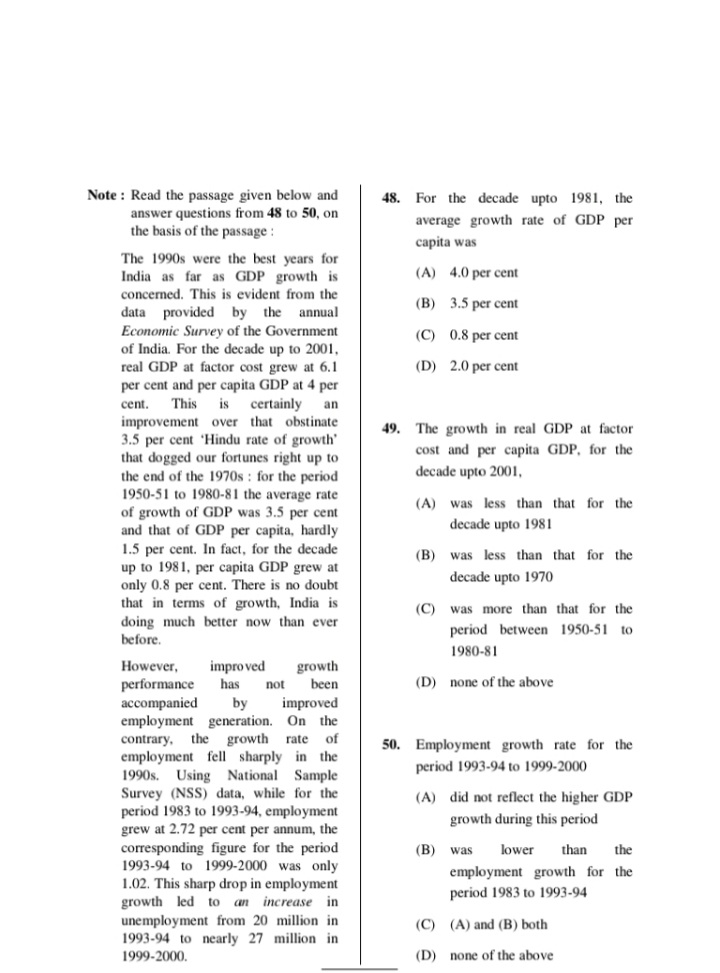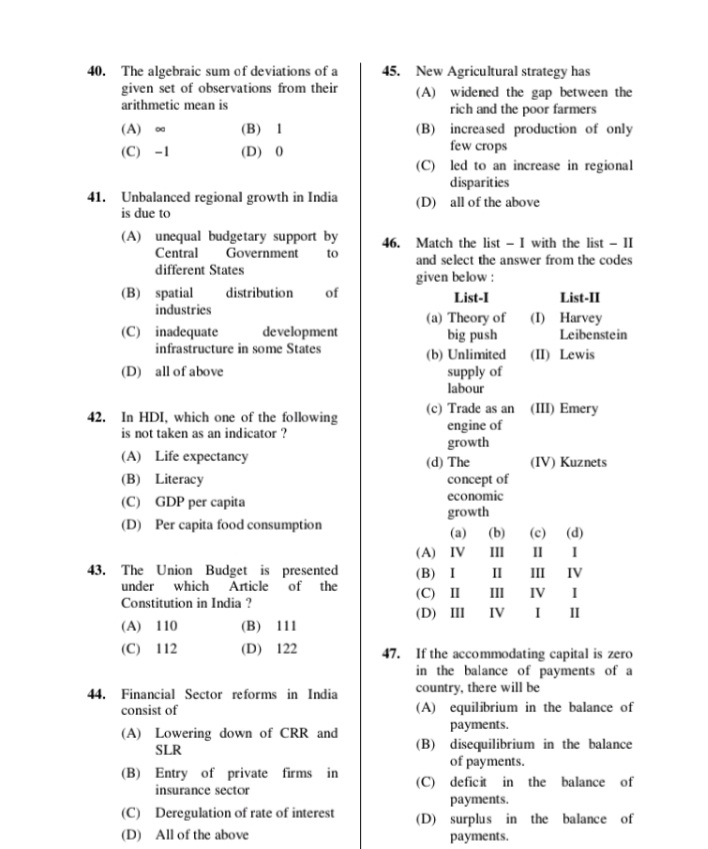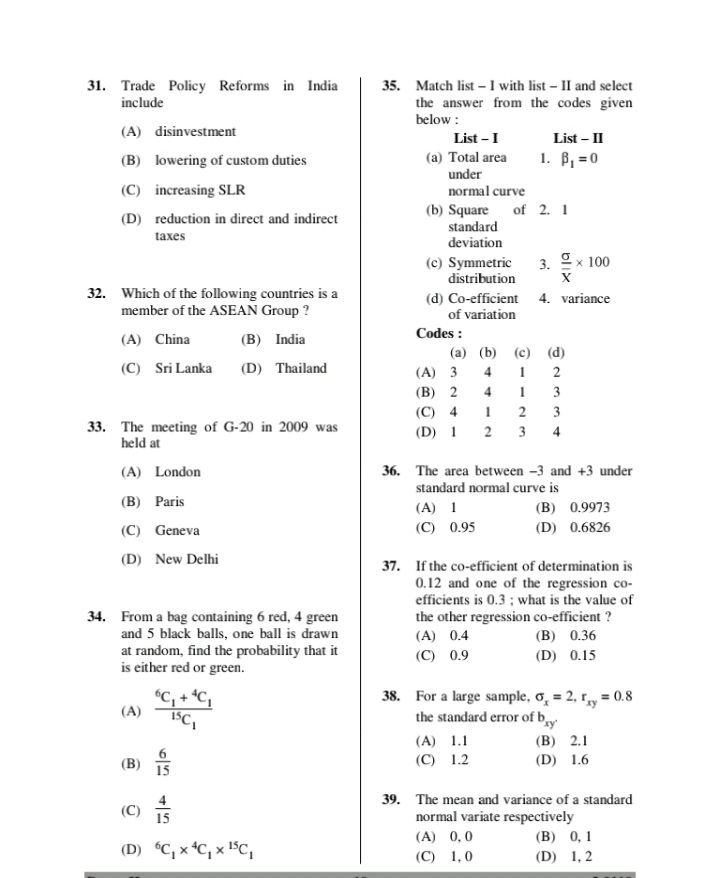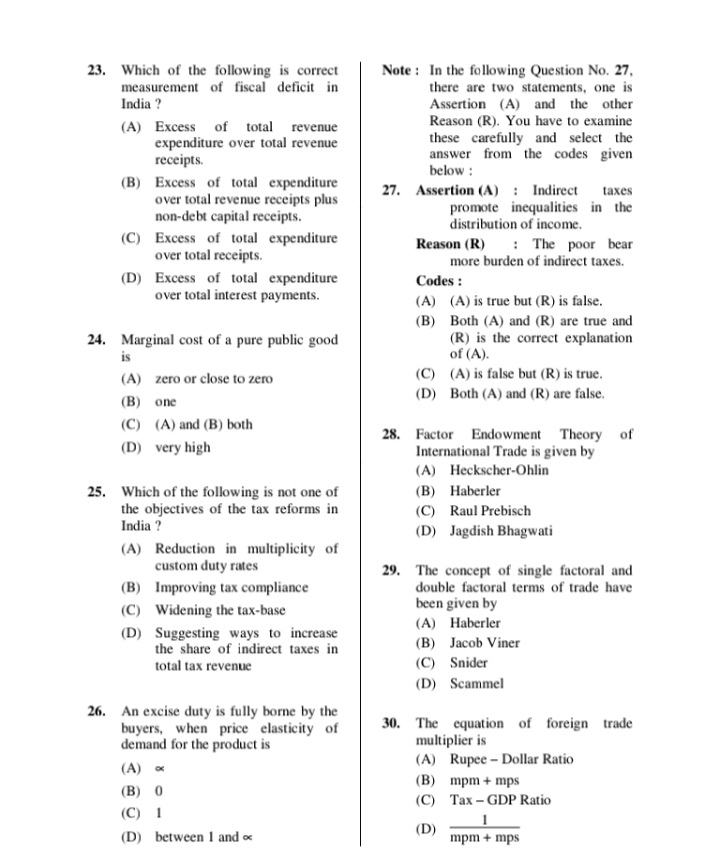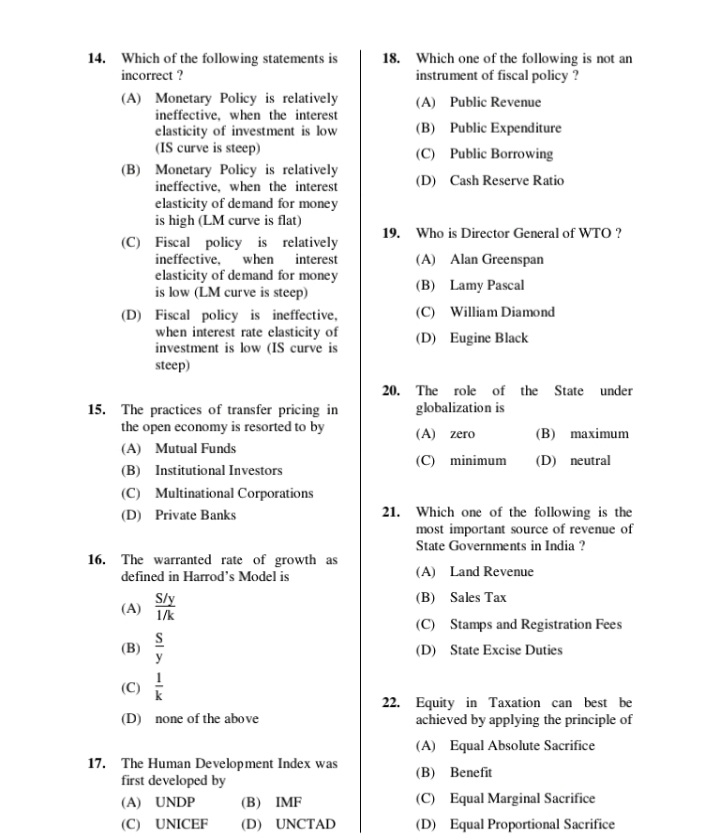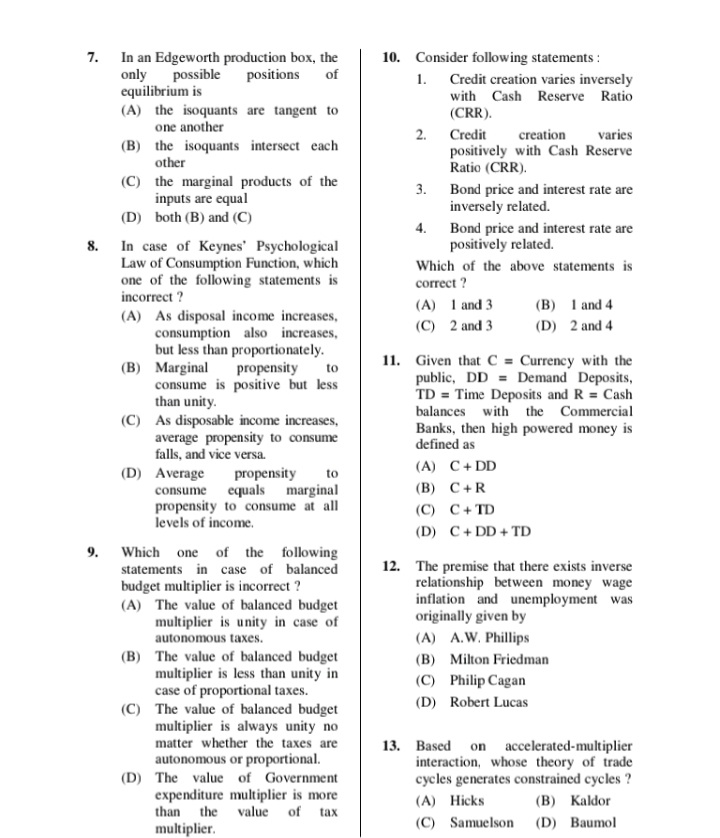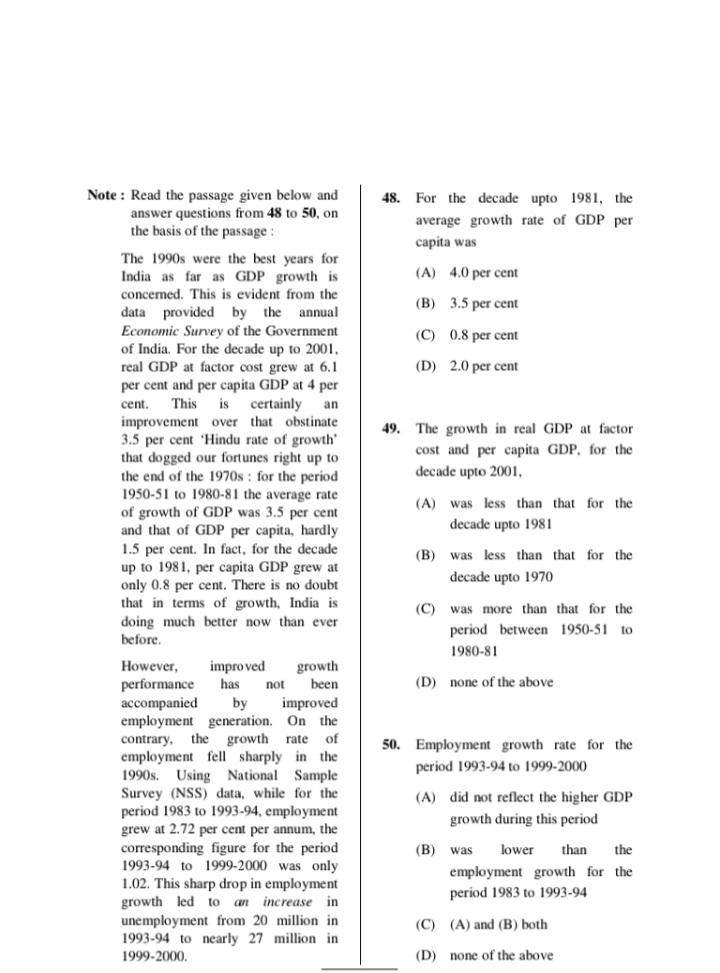
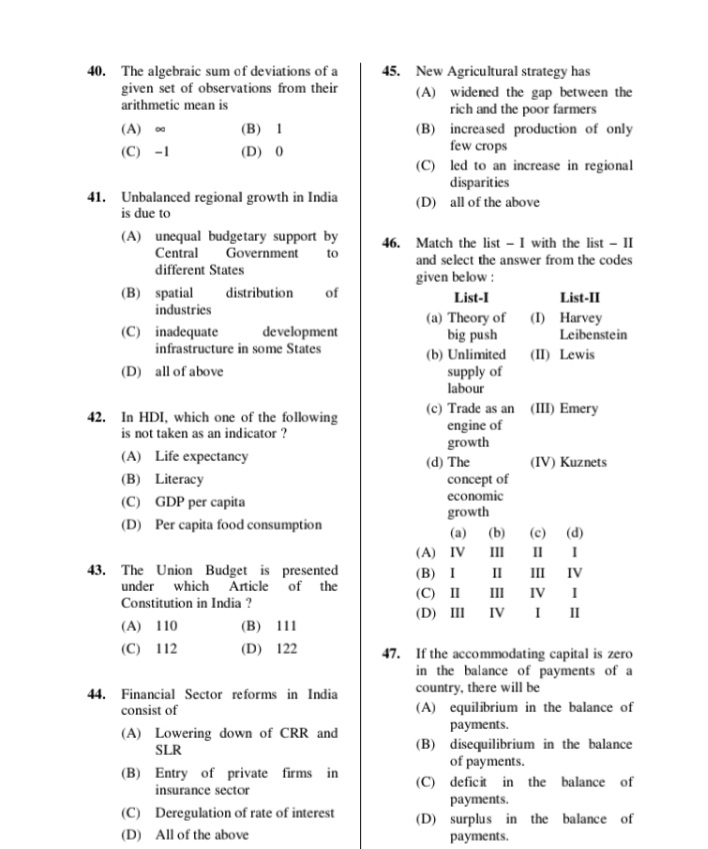
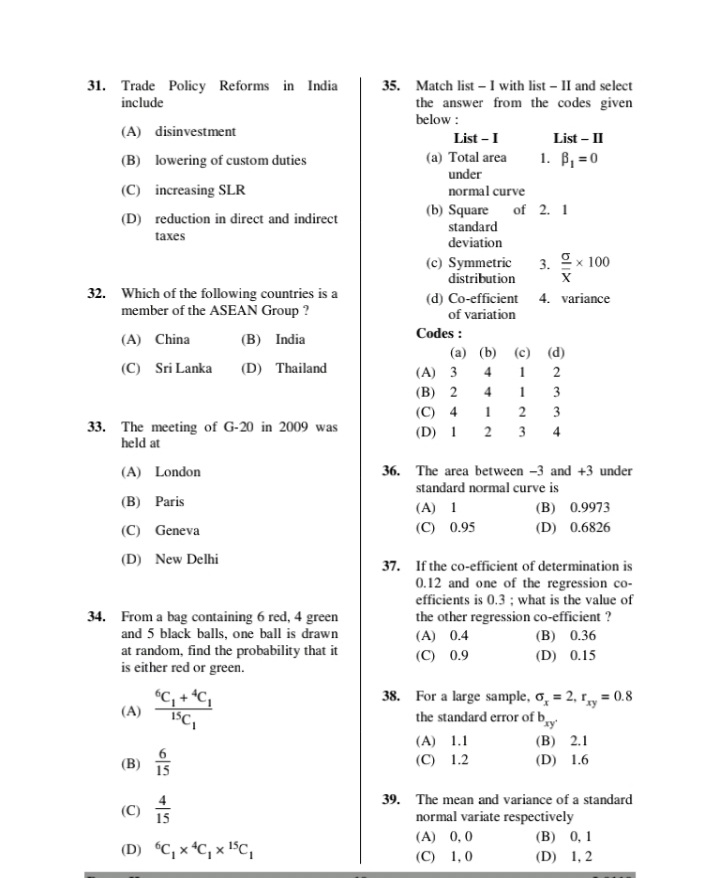
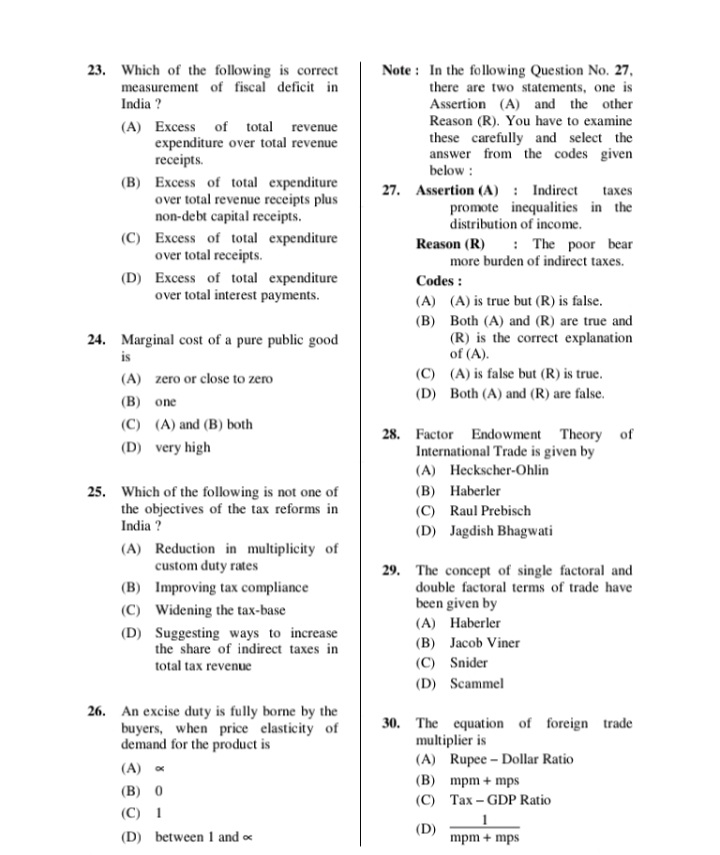
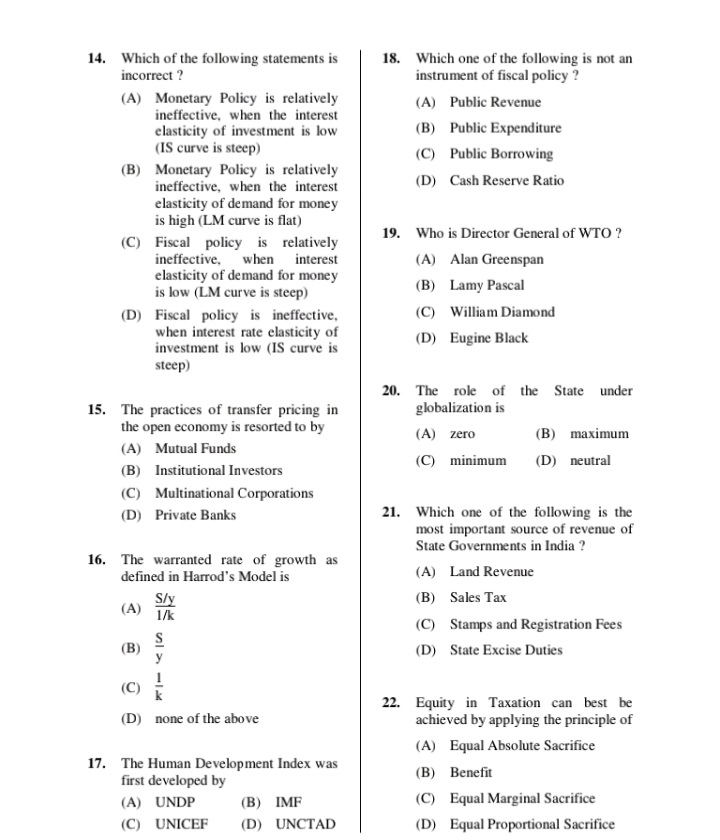
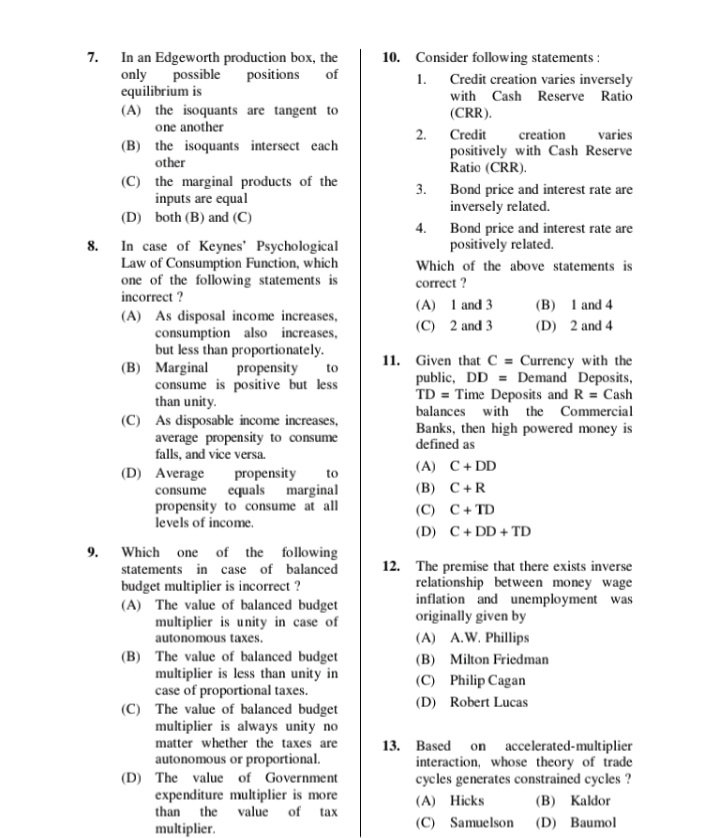
questions is provided below thank you
Note : Read the passage given below and 48. For the decade upto 1981, the answer questions from 48 to 50, on average growth rate of GDP per the basis of the passage : capita was The 1990s were the best years for India as far as GDP growth is (A) 4.0 per cent concerned. This is evident from the data provided by the annual (B) 3.5 per cent Economic Survey of the Government (C) 0.8 per cent of India. For the decade up to 2001, real GDP at factor cost grew at 6.1 (D) 2.0 per cent per cent and per capita GDP at 4 per cent. This is certainly an improvement over that obstinate 3.5 per cent 'Hindu rate of growth" 49. The growth in real GDP at factor that dogged our fortunes right up to cost and per capita GDP, for the the end of the 1970s : for the period decade upto 2001, 1950-51 to 1980-81 the average rate of growth of GDP was 3.5 per cent (A) was less than that for the and that of GDP per capita, hardly decade upto 1981 1.5 per cent. In fact, for the decade (B) was less than that for the up to 1981, per capita GDP grew at only 0.8 per cent. There is no doubt decade upto 1970 that in terms of growth, India is ) was more than that for the doing much better now than ever before. period between 1950-51 to 1980-81 However, improved growth performance has not been (D) none of the above accompanied by improved employment generation. On the contrary, the growth rate of 50. Employment growth rate for the employment fell sharply in the 1990s. Using National Sample period 1993-94 to 1999-2000 Survey (NSS) data, while for the (A) did not reflect the higher GDP period 1983 to 1993-94, employment grew at 2.72 per cent per annum, the growth during this period corresponding figure for the period (B) was lower than the 1993-94 to 1999-2000 was only employment growth for the 1.02. This sharp drop in employment growth led to an increase in period 1983 to 1993-94 unemployment from 20 million in (C) (A) and (B) both 1993-94 to nearly 27 million in 1999-2000. (D) none of the above40. The algebraic sum of deviations of a 45. New Agricultural strategy has given set of observations from their (A) widened the gap between the arithmetic mean is rich and the poor farmers (A) (B) 1 (B) increased production of only (C) -1 (D) few crops (C) led to an increase in regional disparities 41. Unbalanced regional growth in India (D) all of the above is due to (A) unequal budgetary support by 46. Match the list - I with the list - II Central Government to and select the answer from the codes different States given below : (B) spatial distribution of List-I List-II industries (a) Theory of (1) Harvey (C) inadequate development big push Leibenstein infrastructure in some States (b) Unlimited (II) Lewis (D) all of above supply of labour 42. In HDI, which one of the following (c) Trade as an (III) Emery is not taken as an indicator ? engine of growth (A) Life expectancy (d) The (IV) Kuznets (B) Literacy concept of (C) GDP per capita economic growth (D) Per capita food consumption (a) (b) (c) (d) (A) IV III 43. The Union Budget is presented (B) I II III IV under which Article of the (C) II III IV I Constitution in India ? (D) III IV II (A) 110 (B) 111 (C) 112 (D) 122 If the accommodating capital is zero in the balance of payments of a 44. Financial Sector reforms in India country, there will be consist of (A) equilibrium in the balance of (A) Lowering down of CRR and payments. SLR (B) disequilibrium in the balance of payments. (B) Entry of private firms in (C) deficit in the balance of insurance sector payments. (C) Deregulation of rate of interest (D) surplus in the balance of (D) All of the above payments.31. Trade Policy Reforms in India 35. Match list - I with list - II and select include the answer from the codes given below : (A) disinvestment List - I List - II (B) lowering of custom duties (a) Total area 1. 8, =0 under (C) increasing SLR normal curve (D) reduction in direct and indirect (b) Square of 2. 1 standard taxes deviation (c) Symmetric 3. 2 x 100 distribution Y 32. Which of the following countries is a (d) Co-efficient 4. variance member of the ASEAN Group ? of variation (A) China (B) India Codes : (a) (b) (c) (d) (C) Sri Lanka (D) Thailand (A) 3 2 (B) 2 3 (C) 3 33. The meeting of G-20 in 2009 was (D) 2 3 A held at (A) London 36. The area between -3 and +3 under standard normal curve is (B) Paris (A) 1 (B) 0.9973 (C) Geneva (C) 0.95 (D) 0.6826 (D) New Delhi 37. If the co-efficient of determination is 0.12 and one of the regression co- efficients is 0.3 ; what is the value of 34. From a bag containing 6 red, 4 green the other regression co-efficient ? and 5 black balls, one ball is drawn (A) 0.4 (B) 0.36 at random, find the probability that it (C) 0.9 (D) 0.15 is either red or green. 6C + 4C, 38. For a large sample, 6, = 2, [, = 0.8 (A) ISCI the standard error of by (A) 1.1 (B) 2.1 6 (B) 15 (C) 1.2 (D) 1.6 39. The mean and variance of a standard (C) 4 15 normal variate respectively (A) 0, 0 (B) 0, 1 (D) C, x 4C1 x 15CI (C) 1,0 (D) 1, 223. Which of the following is correct Note : In the following Question No. 27, measurement of fiscal deficit in there are two statements, one is India ? Assertion (A) and the other (A) Excess of total revenue Reason (R). You have to examine expenditure over total revenue these carefully and select the receipts. answer from the codes given below : (B) Excess of total expenditure 27. Assertion (A) : Indirect taxes over total revenue receipts plus promote inequalities in the non-debt capital receipts. distribution of income. (C) Excess of total expenditure Reason (R) : The poor bear over total receipts. more burden of indirect taxes. (D) Excess of total expenditure Codes : over total interest payments. (A) (A) is true but (R) is false. (B) Both (A) and (R) are true and 24. Marginal cost of a pure public good (R) is the correct explanation is of (A). (A) zero or close to zero (C) (A) is false but (R) is true. (B) one (D) Both (A) and (R) are false. (C) (A) and (B) both 28. Factor Endowment Theory of (D) very high International Trade is given by (A) Heckscher-Ohlin 25. Which of the following is not one of (B) Haberler the objectives of the tax reforms in (C) Raul Prebisch India ? (D) Jagdish Bhagwati (A) Reduction in multiplicity of custom duty rates 29. The concept of single factoral and (B) Improving tax compliance double factoral terms of trade have (C) Widening the tax-base been given by (A) Haberler (D) Suggesting ways to increase the share of indirect taxes in (B) Jacob Viner total tax revenue (C) Snider (D) Scammel 26. An excise duty is fully borne by the buyers, when price elasticity of 30. The equation of foreign trade demand for the product is multiplier is (A) Rupee - Dollar Ratio (A)






